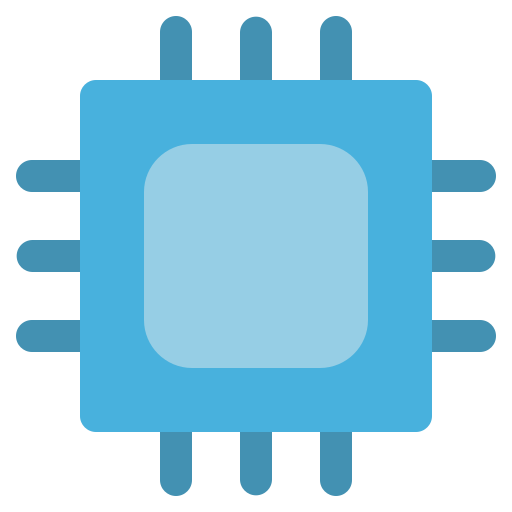

Good on you. I hope all the games find a good home.


Good on you. I hope all the games find a good home.


That’s super underselling it. Open Financial Exchange OFX is still the go-to for markets and banks to exchange information with various end user devices. ISO 20022 is a standard used in banking that is XML based. Fedwire, the platform that moves money between the central banks completed transition to XML in July… of this year.
Credit reporting agencies, insurance agencies, hospitals, medicare, medicaid, massive amounts of the entire global logistics industry are heavily using XML with no plans in the near future to move off of it. Like the network that handles auto insurance claims and reporting them to people like LexisNexus is all XML.
Like it’s impossible to cover just how much of this planet runs on XML.


“Device hoarding”
The only hoarding going on is the money the C-Staff of these companies keeps hoarding.
We don’t have to make a trillion iDevices if everyone is being paid good wages.


A lot of the Epstein files has been released. However, there are some things not released. Something I’ll refer people to HR 4405
Now in that, let’s look at section C of that bill:
would jeopardize an active federal investigation or ongoing prosecution, provided that such withholding is narrowly tailored and temporary
This is a big deal, because Judges ordering things to not be release CAN NOT be released no matter who says so. This is a separation of powers thing. A lot of things are withheld from the public because it’s part of various legal cases. The most recent one I can think of is JP Morgan paying out that $290M to victims and there was like some amount paid to the Virgin Islands.
Now the stuff that’s wrapped up by the Judges, if someone leaks any of that, they are going to prison. And the people who are handling those files are very well aware of the consequences of if they say peep about what they’ve seen.
This is the part where people are like “what if Trump destroys some evidence?” Well a lot of that evidence was turned over to the courts during Biden. So if the DoJ suddenly made things start disappearing, it’s not going to match up with what the court already knows about.
Many people already know what’s in these files. They know what’s going to be brought in legal cases. They also know what would happen to them it if they leaked anything they’ve already seen. And a lot of this information has been steady released to the public.
So this brings up, what the fuck is Congress bitching about then? What Congress is attempting to do, is code into law a requirement for the information to released to the public no matter what might be contained, WITH A FEW EXCEPTIONS AS NOTED IN SECTION C. What this law would do, is not just ensure that justice if done but also ensure that the public is aware of all the details behind the case.
You know how like some court cases will happen and not everything presented in court is released to the public? Well this would codify into law the requirement to release all of that to the public. Of course, AFTER any kind of trial it was used in, if it wasn’t released before a trail began.


European e-waste campaigners are calling on EU leadership to force tech vendors to provide 15 years of software updates, using Microsoft’s plan to end Windows 10 support next month — which may make an estimated 400 million PCs obsolete — as a textbook case of avoidable e-waste.
Windows 10 has already had 10 years of support. ESU extends this one extra year. If you have hardware that cannot meet Windows 11’s requirements, there are other OSes available that will happily run on that hardware. Which is what brings us to the real issue.
Microsoft’s near monopoly on consumer grade PCs and Apple’s vendor lock in. This is the core issue.
Companies can do this because there are no regulations to stop them. We call on European Commissioner Jessika Roswall to introduce EU Ecodesign requirements for laptops, guaranteeing at least 15 years of software updates. No more devices designed to break or become obsolete before their time
Ten years is a very long time for support. If you need support past that length, you need a different OS. Apple does good to keep Macs made in the last five to seven years still able to run their newest OS. They are some of the worse offenders on this. But even with a different OS, there’s still a limit to how far you can take hardware. You could put the best optimized software on really old hardware and that won’t change that the underlying CPU is old.
The older hardware gets the harder it is to keep supporting it. Case in point, there reason you can’t get TLS 1.2 that pretty much every site now requires onto Windows 95 era machine is the underlying hardware cannot keep up with the required computational needs to support that encryption. And if you happened to install Windows 95 onto modern hardware, the number of changes to the OS to get access to the underlying hardware is pretty much an upgrade to Windows 7.
Ten year old machines are doing alright for the time being, but we have to move on. TLS 1.3 is here, has been here since 2018. The stricter requirements for security, require more advanced hardware.
And I just mention TLS as a single example of what we’re talking about here. Modern hardware advances and attackers and users get those at the same time. While software security schemes do ensure security long after the hardware has become dated, there’s a point where it won’t matter anymore what software you toss onto the machine. It’s just so out dated it doesn’t matter, no software is securing it. Now that’s usually a lot longer than ten years, but it’s not much longer.
You can take a very lightweight Linux distro and pop it onto a Pentium 3 machine. It will technically run. But you are lacking SSE2 and even if you recompiled to remove SSE2 optimizations and strictly held to 586 ISA, you’re not going to enjoy the performance on the machine. For even the most simple tasks like unpacking a 7-zip. You will fare very unwell to some attacker who has a modern Threadripper machine.
I love old machines but the rest of the world is moving forward. Yes, software could technically cover for more than ten years, but not much more. But it’s silly to think that a Athlon 64 (2003), the oldest CPU you can technically get working on Windows 10 because of the NX bit requirement, would be able to keep pace on today’s multi megabyte sized website. Hell even the X2 models that were the first to be “dual core” would have issues with how modern web browsers handle things because Athlon 64 X2’s model for multiple processors is vastly different than how modern CPUs do it. It wouldn’t take anything for someone to feed it a website that would bring the system to it’s knees.
The thing is 15 years a very long time in the world of technology that’s ever evolving. Software can only go so far. 15 years is absolutely you need a different OS if that’s your requirement territory. But when you start hitting 20 years, your going to see breakage no matter what software you throw at it. It might be very slight at the 20 year mark. but each year after that it’s going to become more pronounced.
Sadly your employer is likely in the right here. Oregon just recently passed a law requiring what you have indicated. Senate Bill 906. It goes into effect January 1, 2026. However, before that point in time, employers are not legally required to spell out anything about your employment to you at any given point so long as they fulfill the requirements to give you a timely W-2 when tax time rolls around.
As for the $1232, that is quite the amount and I would not see that as reasonable. However, it really depends on if you want to call their bluff on attorney advisement. The letter looks like something they blew out their own printer, but doctors are petty as fuck and will drag your ass into court over six pennies, or at least in the time I’ve ever known them.
However, take none of this as legal advice. More like a suggestion and you should absolutely look at whatever your local laws are. Oregon JUST got on the bus about requiring employers to provide exactly the documentation you are requesting. I know, but some States still don’t have a legal requirement to provide paystubs. And Federal law absolutely doesn’t require that, they only require the whole “things you need to fill out your taxes”. In many of the States that don’t require it, if your employer does hand it off to you, it puts a ton of responsibility on it being correct on the employer. So some will literally go to a CPA for this one off, which is a much higher rate than a regular book keeper.
But yeah, your Government just recently addressed this, but it doesn’t go into effect until next year. So sadly that new law does not help you here. However, you should absolutely speak with your department of labor to see if there are avenues you can take.


Socialism? I’m pretty sure someone was against that.


Web 3.0 should be known as “If you think this place is bad now, just wait till you see our new <quote>feature</quote>.”


It’s super sad how that site continues to degrade in quality.


The entire point of a C- suite is to have a room full of fall guys for the board
This can’t be stressed enough. Every since the Sarbanes–Oxley Act of 2002 which came from the Enron and Worldcom collapses, C-suite exists as the person to go to jail if shit really hits the fan.
The idea of the law was to hold companies accountable, instead all if has done is force companies to create more layers and places to point fingers, thus muddling everything and making to where no one can be held accountable.
At the same time, Chief officers now knowing that there’s legal requirements, have just demanded outrageous pay and compensation because of the “massive risk” they are taking with any company.
I’m glad we have SOX, but boy has that law really missed the mark on what it was enacted to do.
If my years have taught me anything, it’s the latter.
Amazon makes the majority of its money from AWS. Literally using the Internet makes them buckets of money.
People can boycott it all they want. I just don’t use them, but none of that really hurts Amazon in the end.
If people want to actually hurt Amazon they need to call on the Government to break up AWS, Ma Bell style.


This is a trademark dispute. This is why it’s filled with the USPTO as opposed to a court case. Bar for this is way, way lower. Sony has an incredibly good chance to prevail. Sony winning here at the USPTO would deny a trademark for Naughty Cat. But if there is a decent rebuttal from the studio, it may have to go to court to be settled.
That said, Naughty Cat is likely doing exactly what Sony details in their complaint. As the publisher’s works are mostly cheap slot machine themed games.
Naughty Cat only has two apps listed on the App Store, and both are gambling games that promise real cash rewards.
It’s very likely this is one of those cheap Chinese drive by studios and it pinged on Sony’s radar a lot earlier than the studio thought it would.
But motions of opposition are not the same as a full blown suit in Court. So Sony does have an incredibly good chance to have their trademark invalided.


Synology’s new Plus Series NAS
This isn’t surprising. SOHO and middle tier business hardware installs have all kinds of these requirements from support vendors. Synology was sort of an outlier on those that just allowed mixed bag and it provide software calculations on hard drive health.
That they want knowns in their machines isn’t surprising. I’m actually surprised it isn’t a complete drop in any assurances if you BYOD.
These features in this product aren’t home or consumer grade and indicating that it’s for the “advance home user” is like saying Arch Linux is the advance MacOS. There’s a lot of detail behind that statement that’s not being addressed.
It is sad to see them go this route, but I cannot say it comes as a surprise. But honestly, if you’re a hobbyist and see yourself using the features in this level of NAS, you’re likely skilled enough as is to build your own. And honestly, you’ll be happier building your own.


I guess I don’t play Mario then. It’s a pretty simple concept.


Ha ha, but for real. They’ll just turn people’s power off, tell them to ration, and/or jack the price per kWh to 500% what it was.
Team Orange let’s no good calamity go to waste. Everything is potential profit if you have no moral compass.


Their creditors are going to be looking for recompense. So I feel like this is one of those times when we use the answer of “yes”.
Yes, yes, now what about the rest of the stock market?
To say, “oh this boycott is self injury” is akin to worrying about one’s stubbed toe all while bleeding out from a severed arm.
Additionally it’s typical American only thinking to believe it’s just the US citizens boycotting the company. You easily forget that sales are down globally, not just the US.


That’s where the game pricing comes in.
Mom, I want an aim bot!
But we have aim bots at home.
The aim bots at home.